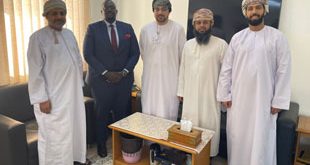
CSOs call for ‘special drawing rights’ to deal with COVID-19 crises
Kampala, Uganda | JULIUS BUSINGE | Economic experts are calling for the implementation of all kinds of measures geared towards bringing back to life the world economy that has been severely hit by COVID-19 pandemic since last year when lockdown measures were put in place.
The latest measure being pushed is for the International Monetary Fund (IMF) to approve the issuance of Special Drawing Rights (SDRs) to assist developing countries contain the economic and social impacts of the pandemic in particular, and to enable their economic recovery.
The SDR is an international reserve asset, created by the IMF in 1969 to supplement its member countries’ official reserves and provide liquidity support when experiencing balance of payments crisis.
Member countries do not have to meet any specific requirements to receive their share of an allocation; they have the right to use SDRs to obtain currencies from other participants and use them for economic purposes, said Dr. Chiara Mariotti, an expert on this topic.
Mariotti was speaking at media briefing by the Southern and Eastern Africa Trade Information and Negotiations Institute (SEATINI) Uganda, Uganda Debt Network, Civil Society Budget Advocacy Group, Transparency International Uganda and the African Forum and Network on Debt and Development.
The briefing was about the IMF Special Drawing Rights being one of the financing option to fight against the COVID-19 pandemic and economic recovery in Africa, held on March 25 in Kampala.
So far, according to Mariotti, about SDR204.2billion (equivalent US$281billion) have been allocated to members, including SDR182.6billion (US$182.6billion) allocated in 2009 in the wake of the global financial crisis. Other general allocations were in 1970-1972; 1979-1981.
The value of the SDR is based on a basket of five currencies – the U.S. dollar, the euro, the Chinese renminbi, the Japanese yen, and the British pound sterling, according to the IMF.
SDRs are distributed in proportion to IMF members’ quotas (around 60% to global north/developed economies, 40% to emerging market and developing economies, of which 3% has gone to low-income countries (LICs).
CSOs however want more allocations to go to the LICs that badly require economic recovery.
They are calling for new issuance of 3trillion of SDRs currency or equivalent US$3trillion as part of the existing debt relief measures to developing countries.
“These new allocations would ease fiscal constraints and enable African countries invest in protecting the citizens against the economic contraction and support increase health spending for tests, protective equipment, treatment, and procure vaccine and invest and strengthen healthcare systems,” Mariotti said.
The other critical areas of investment are to increase social protection spending to allow locked down citizens to survive financially and protect the most vulnerable in addition to rebuilding economies through direct bailouts of enterprises.
The CSOs however want the money, if given to be spent carefully.
“We are not against borrowing; but we are for prudent management of debt across the public finance spectrum,” Julius Kapwepwe, from Uganda Debt Network said.
As of July 01, 2020, Uganda’s debt stood at Shs57trillion (US$15bn) which is equivalent to slightly over 40% of GDP, just 9% below the recommended ceiling by the IMF. Meanwhile, the East Africa’s debt stood at US$112bn as of the same period.
Kapwepwe said investing in areas that generate anticipated returns would help economies to meet their debt obligations, improve their credit rating and relationship with lenders.
The Executive Director of SEATINI, Jane Nalunga said, government should reduce unnecessary public expenditure (political in nature) and divert the money to critical development sectors of agriculture, trade, tourism so as to generate returns for debt repayment.
Samson Muwanguzi, a principal economist from the Ministry of Finance Planning and Economic Development said, government welcomes all proposals that require analysis and subsequent implementation to push the economy’s economic growth curve northward.
Questions for Africa
Should governments increase taxes to raise the funds for the vaccines? With economies projected to contract, will businesses survive, and taxpayers manage?
In 2020, majority of Sub-Saharan countries secured loans from the IMF and the African Development Bank for the COVID-19 response and this will push public debt levels higher in comparison to their GDP.
A new issuance of SDRs by the IMF, according to CSOs would build up the level of foreign currency reserves in the central banks of developing countries, which would enable them to borrow at lower interest rates and engage in more affordable emergency fiscal stimulus spending as well as purchase needed imports.
This would help them to do fiscal spending just like the rich countries are doing in the current economic crisis, CSOs say.
“One of the reasons to call for SDRs is that countries would have more freedom to choose how to use them compared to new lending by World Bank and IMF,” Mariotti said.
****
 The Independent Uganda: You get the Truth we Pay the Price
The Independent Uganda: You get the Truth we Pay the Price


